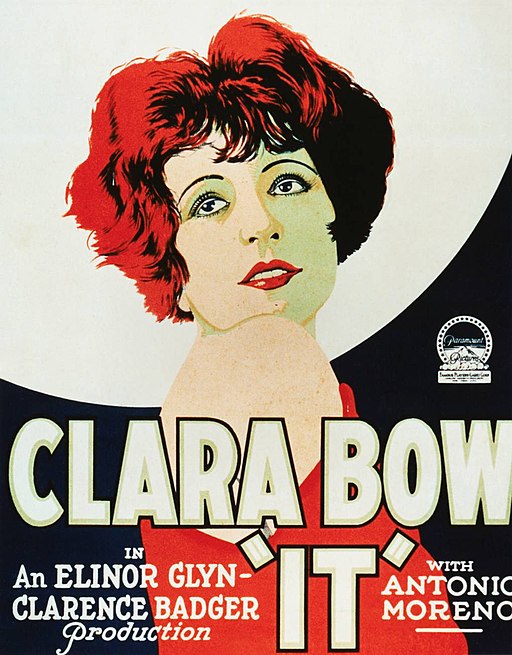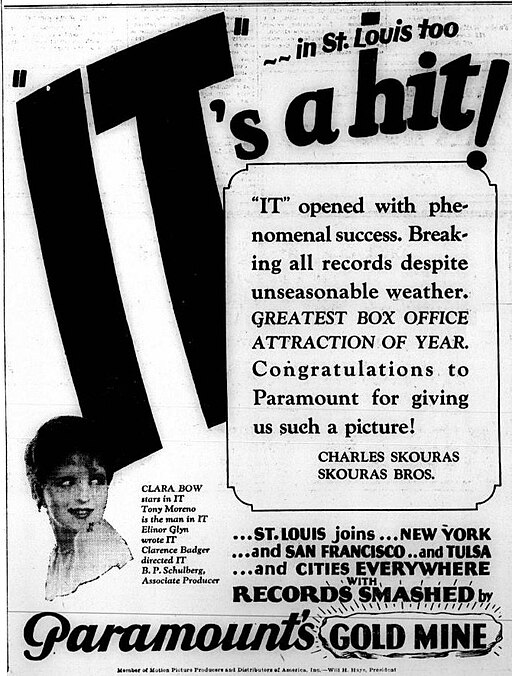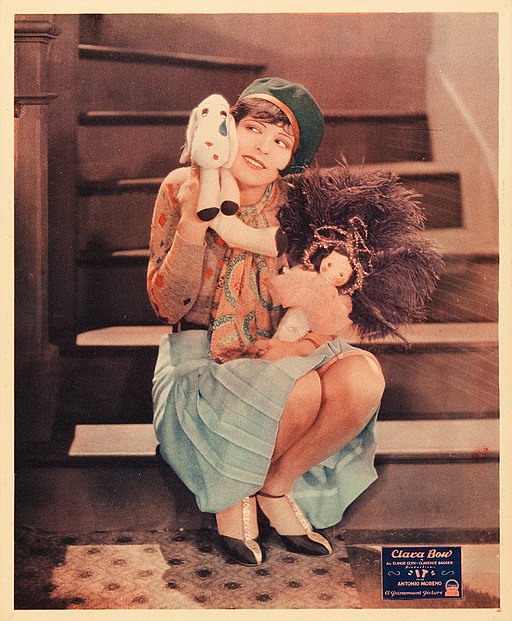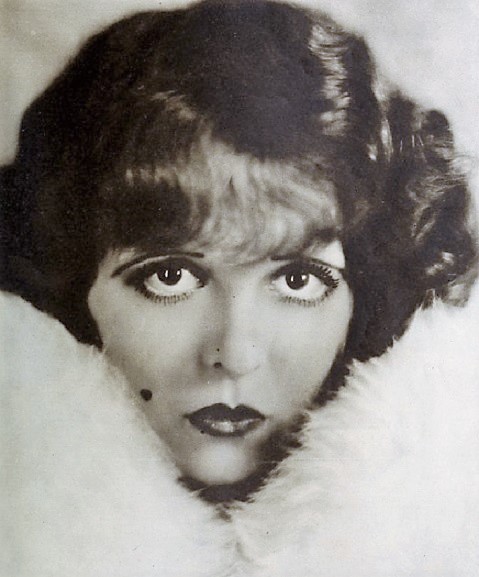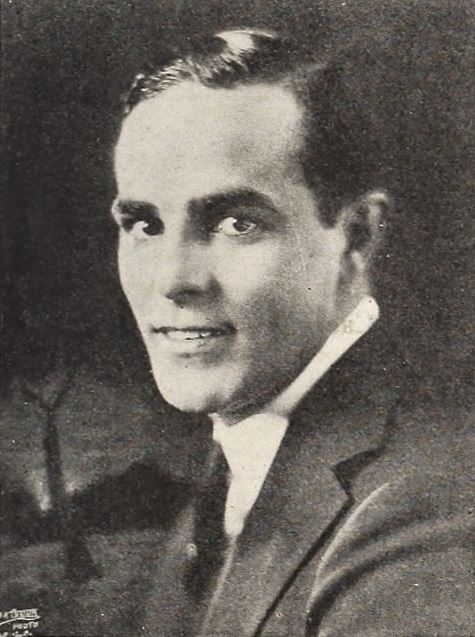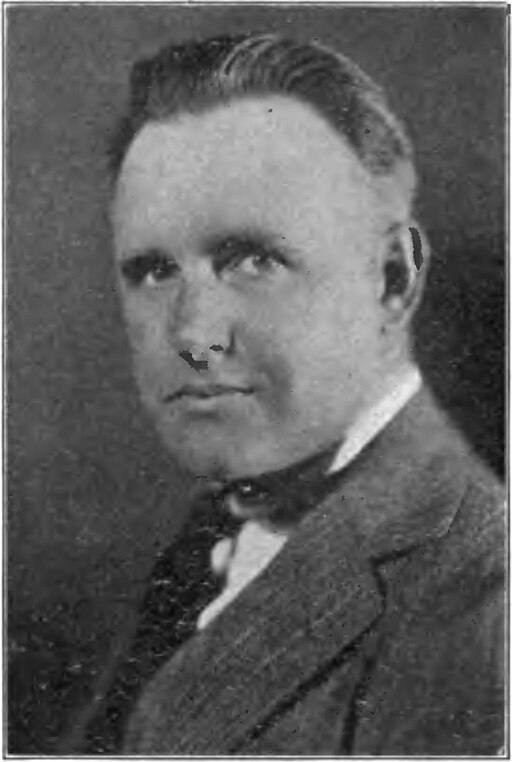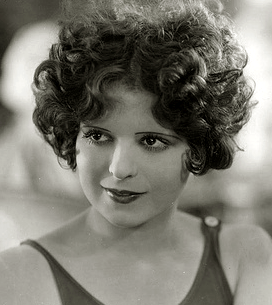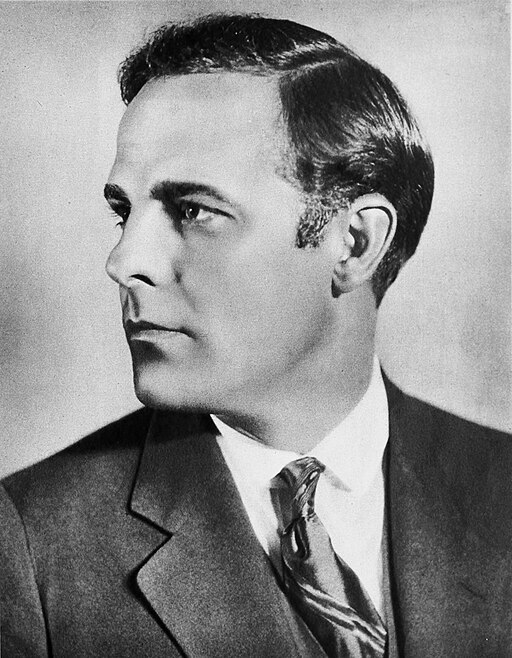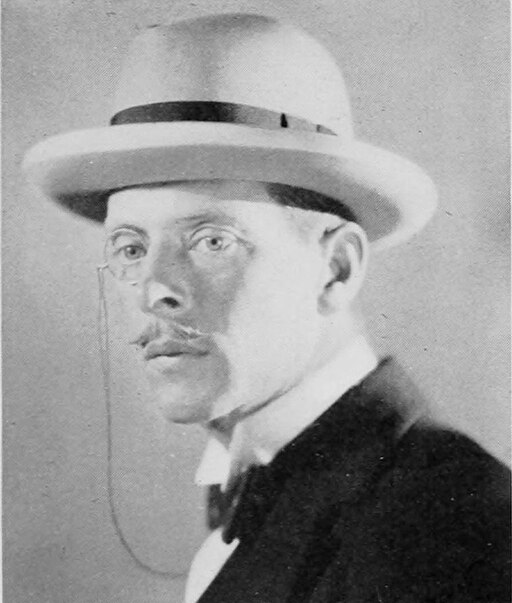It - 1927
back| Released by | Paramount Pictures |
| Director | Clarence Badger (and, uncredited, Josef von Sternberg) |
| Producer | Elinor Glyn |
| Script | Hope Loring and Louis D. Lighton, based on the story by Elinor Glyn |
| Cinematography | H. Kinley Martin |
| Music by | Silent movie |
| Running time | 72 minutes |
| Film budget | Unknown |
| Box office sales | $ 1 million |
| Main cast | Clara Bow - Antonio Moreno - William Austin - Priscilla Bonner - Jacqueline Gadsden |
It
Introducing the It Girl
It, directed by Clarence Badger in 1927, stars Clara Bow as Betty Lou Spence, a spirited department store clerk who embodies the "It" factor - an irresistible blend of charm, confidence, and sex appeal.
Set against the backdrop of the Roaring Twenties, the film explores themes of love, social class, and the allure of the "It girl." Bow's performance was pivotal, not only propelling her to stardom but also defining the archetype of the modern, independent woman in cinema.
The film's success popularized the term "It girl," forever associating it with Bow, and influenced the portrayal of strong, charismatic women in Hollywood.
Related
It – 1927
Summary and Analysis
The film is set in the bustling world of the 1920s, focusing on Betty Lou Spence (played by Clara Bow), a vivacious and charismatic salesgirl working at Waltham's Department Store. Betty embodies the concept of "It," a term popularized by British author Elinor Glyn, referring to a magnetic, vibrant personality that attracts others with its sheer force. Betty's life takes a dramatic turn when she sets her sights on the store's wealthy and handsome owner, Cyrus Waltham (Antonio Moreno).
Despite their different social standings, Betty is determined to win Cyrus's heart, using her charm, wit, and the elusive quality of "It." Cyrus is intrigued by Betty, but their budding romance faces obstacles, including misunderstandings and the machinations of socialite Adela Van Norman (Jacqueline Gadsden), who has her own designs on Cyrus.
A critical subplot involves Betty's friend, Molly (Priscilla Bonner), who faces social ruin after an out-of-wedlock pregnancy. Demonstrating her loyalty and compassion, Betty concocts a plan to save Molly's reputation, which leads to a series of comedic and touching moments that further endear her to Cyrus.
The climax of the film sees Betty and Cyrus overcoming the barriers between them, including Cyrus's initial doubts about Betty's character, spurred by societal prejudices and Adela's scheming. In the end, love and Betty's irrepressible spirit triumph, with Cyrus recognizing that Betty's "It" quality is not just superficial charm, but also her courage, kindness, and authenticity.
Analysis
It is a seminal film that not only defined Clara Bow's career but also left a lasting imprint on the lexicon of pop culture. The film's success hinged on Bow's charismatic performance, which perfectly captured the essence of the "It girl" – a woman who possesses an attractive power that goes beyond physical beauty, embodying independence, intelligence, and allure.
Director Clarence Badger, with the uncredited assistance of Josef von Sternberg, crafts a narrative that is both a romantic comedy and a subtle social critique. The film explores themes of class disparity, social mobility, and the power of personality over social conventions. Through Betty Lou's character, the film champions the idea that individual qualities and personal integrity can transcend societal barriers, a resonant message during the roaring twenties, an era marked by rapid social changes and the rise of consumer culture.
The cinematography and visual storytelling, typical of the silent film era, rely heavily on the expressive capabilities of the actors, particularly Bow, whose screen presence is captivating. The use of intertitles adds to the film's charm, providing witty dialogues and insights into the characters' thoughts, enhancing the emotional depth and humor of the narrative.
Despite being a product of its time, It addresses themes that remain relevant, such as the critique of social elitism and the celebration of authenticity and emotional intelligence. The film's portrayal of a strong, independent female protagonist was somewhat ahead of its time, offering a nuanced take on femininity and empowerment.
It remains a landmark film for its historical significance in cinema and popular culture. It not only catapulted Clara Bow to stardom but also showcased the transformative power of the film medium, demonstrating how a charismatic performance and a compelling narrative could captivate audiences and influence societal perceptions.
Scene from the Movie:
Full Cast of the Movie:
- Clara Bow as Betty Lou Spence
- Antonio Moreno as Cyrus Waltham Jr.
- William Austin as Monty Montgomery
- Priscilla Bonner as Molly
- Jacqueline Gadsdon (credited as Jacqueline Gadsden) as Adela Van Norman
- Gary Cooper as Reporter (uncredited)
- Elinor Glyn as Herself (uncredited, in a cameo role)
- Julia Swayne Gordon as Mrs. Elinor Waltham
- Dorothy Cumming as Sarah, the governess
- Charles Sellon as Pa Spence
- Ethel Wales as Ma Spence
- Edythe Chapman as Mrs. Van Norman
- Margaret Morris as Lita Lorraine
- Mary Foy as Welfare worker
- Jed Prouty as Welfare worker's husband
- Billy Kent Schaefer as Junior (uncredited)
- Harry Bowen as Office boy (uncredited)
- Nancy Drexel as Young girl (uncredited)
Analysis of the Directing Style of Clarence Badger:
Clarence Badger’s direction of the 1927 film It, starring Clara Bow, stands out as a noteworthy accomplishment in the silent film era, capturing the essence of the Jazz Age and the burgeoning concept of the "It" girl, a term coined to describe a woman with the magnetic allure and vibrant personality that Bow epitomized on screen. Badger, working alongside the uncredited Josef von Sternberg, crafted a narrative that was both engaging and visually expressive, using the limitations of silent cinema to enhance storytelling through innovative cinematographic techniques and the nuanced performances of his actors.
Visual Storytelling
Badger's direction is characterized by its dynamic visual storytelling. He made effective use of close-ups to convey the characters' emotions and thoughts, a technique that was essential in silent films to communicate the narrative without spoken dialogue. The close-ups of Clara Bow, in particular, showcased her expressive eyes and charismatic smile, capturing the "It" quality that defined her character. Badger also employed medium shots and wide angles to depict the bustling atmosphere of the 1920s, from the lively department store where Bow’s character worked to the glamorous social settings that formed the backdrop of the film’s romance and drama.
Pacing and Comedy
Badger demonstrated a keen understanding of pacing in It. The film moves briskly, with a narrative that balances romance, comedy, and social commentary. He adeptly managed the comedic timing through visual gags, slapstick, and the interplay between characters, particularly in scenes involving Bow and her co-stars Antonio Moreno and William Austin. The director's use of physical comedy, combined with the charismatic performances of his actors, contributed to the film's enduring appeal.
Social Commentary
Underneath the romantic and comedic surface of It, Badger wove subtle threads of social commentary into the film. He explored themes of class disparity and social mobility, challenging the norms of the era through the lens of Bow's character, a vivacious working-class girl who pursues love and happiness across the barriers of social class. Badger's direction allowed these themes to emerge naturally from the story, never overshadowing the film's entertainment value but enriching its narrative depth.
Collaborative Approach
Badger’s collaborative approach with his actors and crew contributed significantly to the film’s success. His ability to harness Clara Bow's natural charisma and ensure that the concept of "It" was convincingly portrayed on screen speaks to his skills in actor direction and his understanding of the film’s thematic essence. The uncredited contribution of Josef von Sternberg, particularly in crafting some of the film’s more visually sophisticated scenes, also highlights Badger’s openness to collaboration in achieving the film’s artistic vision.
Conclusion
Clarence Badger's direction of It showcased his adeptness at balancing the demands of silent film storytelling with the need to engage and entertain audiences. Through his innovative use of visual storytelling, mastery of pacing, and subtle engagement with social themes, Badger created a film that not only captured the spirit of the Jazz Age but also solidified Clara Bow's status as the quintessential "It girl." His work on It remains a testament to the artistry and craft of silent cinema, highlighting the ways in which directors of the era were able to communicate complex narratives and emotional depth without the use of spoken dialogue.
Groundbreaking Performance of Clara Bow:
Clara Bow's performance in the 1927 film It is a hallmark of silent cinema, epitomizing the allure and charisma required for the titular concept of the "It girl." Bow's portrayal of Betty Lou Spence, a vivacious department store clerk who captures the heart of the wealthy Cyrus Waltham, is celebrated not just for its embodiment of 1920s flapper culture but for its depth, nuance, and the vibrant personality she brings to the screen. Her performance is a blend of spontaneity, expressiveness, and emotional depth, making it a defining role in her career and a cornerstone of silent film acting.
Expressiveness and Charisma
In the silent film era, the absence of dialogue necessitated that actors convey emotion and narrative through physicality—facial expressions, body language, and movement. Bow excels in this regard, using her eyes, smile, and gestures to communicate a wide range of emotions, from playful mischief and seductive allure to sincerity and vulnerability. Her expressiveness invites the audience into Betty Lou's world, allowing them to understand her motivations, feel her joys and sorrows, and root for her success. Bow's charisma is palpable; she radiates a warmth and vitality that transcends the screen, engaging viewers directly and creating a sense of immediacy and intimacy.
Comic Timing and Physicality
Bow's performance is marked by exceptional comic timing and a natural flair for physical comedy. She navigates the film's comedic moments with ease, whether engaging in playful banter through intertitles, executing physical gags, or employing subtle facial expressions that punctuate the humor of a scene. Her physicality is not just a vehicle for comedy but also an expression of her character's independence and defiance of societal norms. Bow's Betty Lou is both endearing and empowering, embodying the spirit of the modern woman of the 1920s.
Emotional Depth
While Bow's performance is undoubtedly charming and lighthearted, it also contains moments of genuine emotional depth. She skillfully conveys Betty Lou's determination and resilience in the face of adversity, her compassion for her friends, and her longing for love and acceptance. These moments of vulnerability add layers to her character, making her more than just a symbol of youthful exuberance and sexual liberation. Bow's ability to balance the comedic and dramatic elements of her role showcases her versatility as an actress.
Cultural Impact
Bow's performance in It had a significant cultural impact, cementing her status as the quintessential "It girl" and becoming an icon of the Roaring Twenties. She became synonymous with the film's concept of "It" – an indefinable quality of attraction, charisma, and confidence. Her portrayal of Betty Lou Spence resonated with contemporary audiences and remains a defining example of silent film performance. Through this role, Bow demonstrated that the "It" factor transcended physical appearance, encompassing an individual's spirit, independence, and inner strength.
Conclusion
Clara Bow's performance in It is a masterclass in silent film acting, demonstrating the power of non-verbal communication in storytelling. Her portrayal of Betty Lou Spence is a vibrant and nuanced celebration of femininity, independence, and the elusive "It" quality that defines true star power. Bow's work in the film is not only a testament to her talent and charisma but also a reflection of the changing social dynamics and cultural aspirations of the 1920s. Through her performance, Clara Bow not only defined an era but also left an indelible mark on the history of cinema.
Notable Intertitles:
-
"It... that quality possessed by some which draws all others with its magnetic force. With 'It' you win all men if you are a woman—all women if you are a man. 'It' can be a quality of the mind as well as a physical attraction." - This intertitle introduces the concept of "It," a central theme of the film, echoing the definition provided by British author Elinor Glyn, who plays herself in a cameo role.
- "Sweet Santa Claus, give me a break!" - Betty Lou Spence utters this line as an intertitle, showcasing her playful and optimistic attitude towards life and love, even in the face of challenges.
- "I'm not your baby—I'm my own baby." - A statement of independence and self-assurance from Betty, this intertitle reflects her strong, independent nature and her determination to be seen as an equal in her romantic pursuits and social interactions.
- "You can't have pep if you're dead from the neck up." - Another witty remark from Betty, highlighting her spirited personality and critiquing those who lack enthusiasm and vivacity.
- "Nothing ever matters to a man on a yacht." - This line is reflective of the social and romantic dynamics explored in the film, pointing to the carefree and often superficial lifestyle of the wealthy.
Awards and Recognition:
The 1927 film It, starring Clara Bow and directed by Clarence Badger, is a significant piece of cinema history, particularly known for popularizing the concept of the "It girl." However, it's important to note that the film was released during an era when the formal awards system that we're familiar with today, such as the Academy Awards, was not yet established. The first Academy Awards ceremony took place in 1929, two years after It was released.
As such, It did not receive contemporary awards or nominations from major cinematic institutions like the Oscars. The concept of film awards was still in its infancy at the time, and many films from the silent era were not recognized with formal accolades until much later, if at all, often in the form of retrospective recognition or inclusion in film preservation lists.
That being said, It has received significant recognition over the years for its cultural and historical importance:
- National Film Registry: While It itself has not been specifically listed as of my last update, the significance of films like it from the silent era is often acknowledged through preservation efforts and inclusion in lists dedicated to celebrating cinematic heritage. Films are selected for the National Film Registry based on their cultural, historical, or aesthetic importance to the film heritage of the United States.
- Retrospective Recognition: Films of Clara Bow, including It, have been celebrated in retrospectives and film festivals around the world. These events often honor the impact and legacy of silent film stars and the pioneering work of directors from this era.
- Cinematic Impact Awards: Although not formal awards, Clara Bow's performances, particularly in It, have been highlighted in various lists and discussions about influential films and performances in cinema history.
Classic Scenes from the Movie:
It, the 1927 silent film classic, is remembered not just for introducing the world to the "It girl" in Clara Bow but also for its iconic scenes that capture the essence of the Roaring Twenties and silent cinema. Here are some classic scenes from the movie that stand out for their cinematic craftsmanship, narrative impact, and memorable performances:
The Department Store Scene
One of the film's opening scenes is set in the bustling Waltham Department Store, where Betty Lou Spence (Clara Bow) works. This scene effectively introduces us to Betty's vibrant personality and her life in the fast-paced world of retail. Her interactions with customers and coworkers showcase her charisma, cleverness, and the independent spirit that defines the "It" quality. The department store setting also serves as a microcosm of 1920s society, highlighting class distinctions and the consumer culture of the era.
The "Coney Island" Date
The Coney Island amusement park scene is a highlight of the film, showcasing an iconic date between Betty and Cyrus Waltham Jr. (Antonio Moreno). This sequence is filled with energy and fun, highlighting the leisure activities of the time and allowing for moments of physical comedy, romance, and character development. Their adventures on rides, games, and the famous boardwalk emphasize the growing attraction and compatibility between the working-class Betty and the wealthy Cyrus, despite their differing social backgrounds.
The Yacht Party
The yacht party scene is a pivotal moment in the film, illustrating the social divide between Betty and Cyrus's worlds. Betty's invitation to the party, meant to impress Cyrus and his elite friends, initially backfires due to class prejudices and misunderstandings. However, Betty's genuine charm and wit ultimately shine through, winning over the guests and demonstrating that her "It" factor transcends social barriers. This scene also includes moments of humor and tension, particularly involving the manipulative Adela Van Norman, who sees Betty as a rival for Cyrus's affections.
The Climactic Misunderstanding and Resolution
Towards the film's climax, a significant misunderstanding threatens to derail Betty and Cyrus's budding relationship. When Betty takes in her friend Molly's baby to protect her reputation, Cyrus mistakenly believes the child is Betty's, leading to a confrontation that tests their relationship. Betty's refusal to explain the situation, prioritizing her friend's dignity over her own happiness, adds depth to her character. The resolution of this misunderstanding and the couple's reconciliation underscore themes of trust, loyalty, and the overcoming of societal prejudices, culminating in a satisfying emotional payoff.
The Cameo by Elinor Glyn
A unique and somewhat meta scene involves the cameo appearance by Elinor Glyn, the author who coined the term "It." Glyn appears in the film to explain the concept of "It," lending an air of authenticity and endorsement to the film's exploration of the idea. Her presence links the fictional narrative to the cultural phenomenon of the "It girl," grounding the film's themes in the real-world fascination with charisma, allure, and social magnetism.

